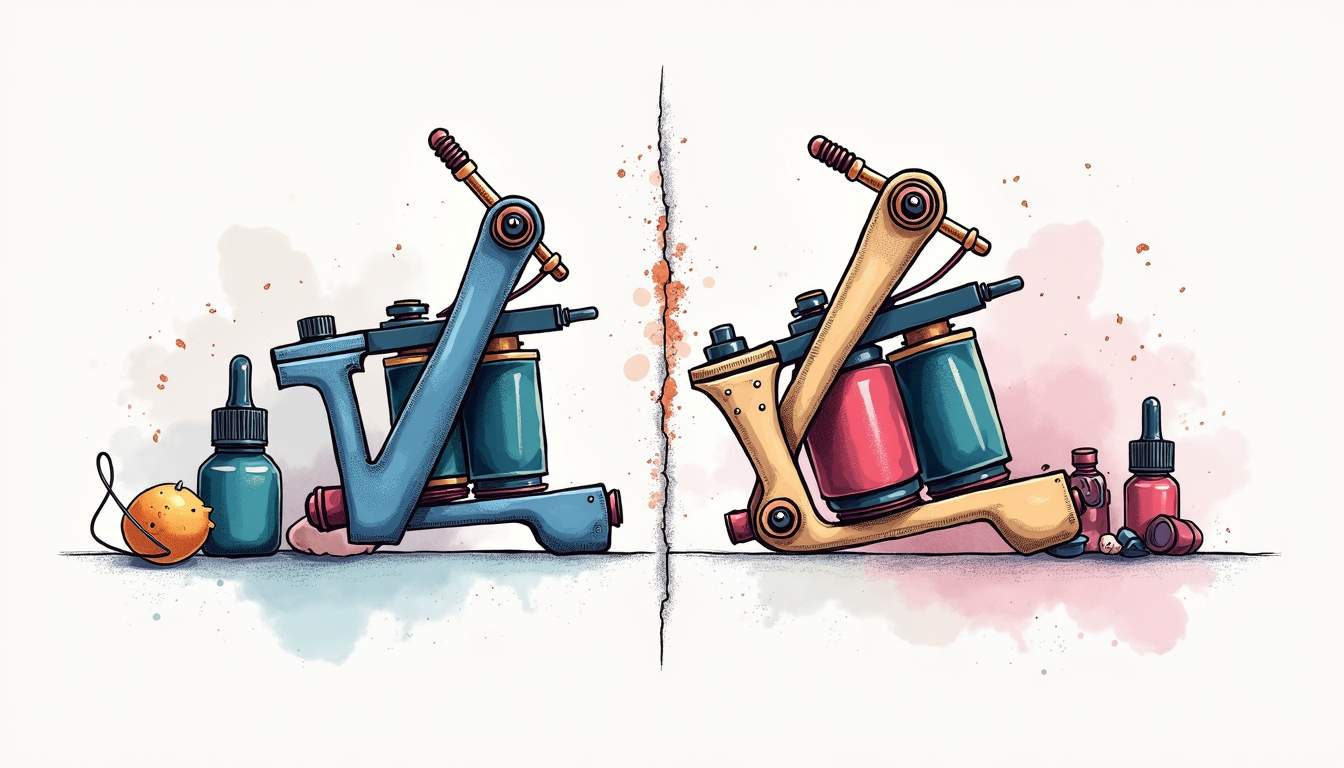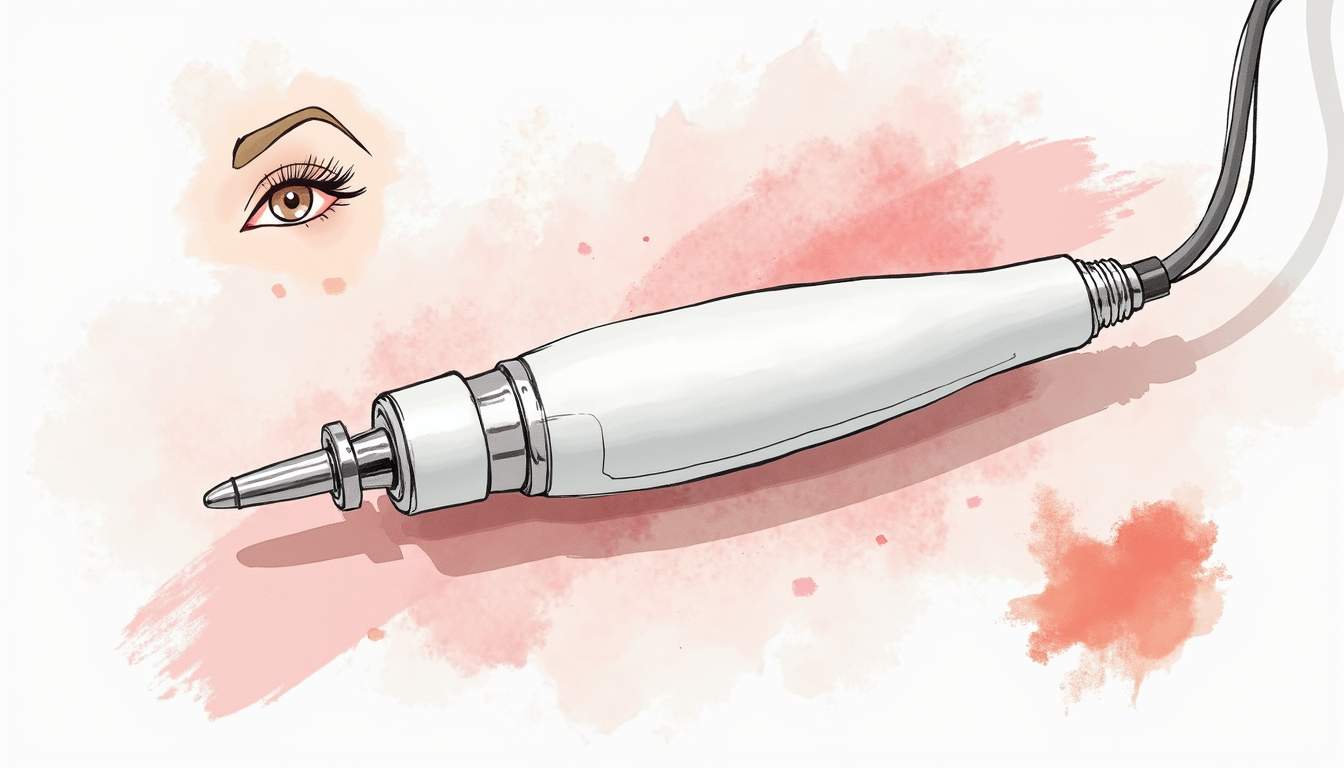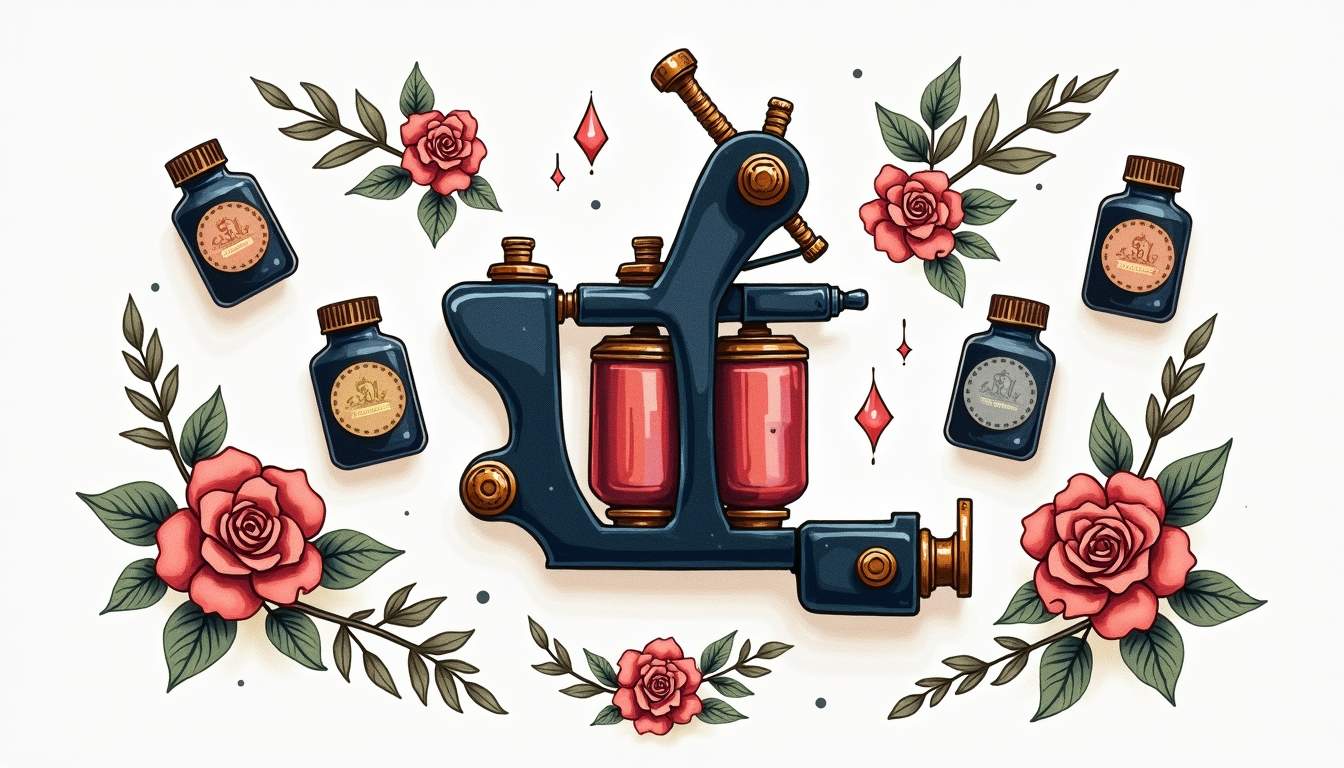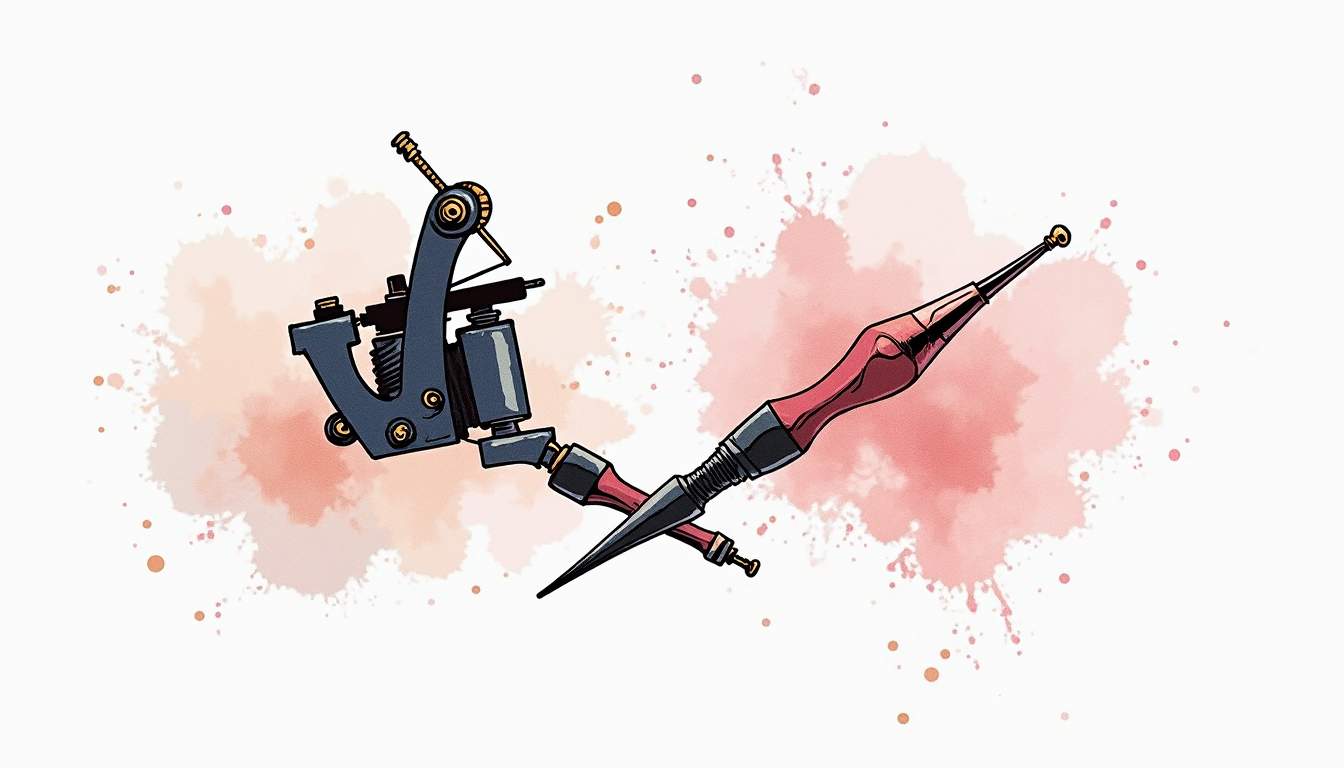Permanent Makeup vs Traditional Tattooing: What Artists Need to Know

Permanent Makeup vs Traditional Tattooing: What Artists Need to Know
In the ever-evolving world of body art, two distinct practices have gained significant popularity: permanent makeup and traditional tattooing. While both involve the application of pigment to the skin, they serve different purposes and require different techniques. Understanding these differences is essential for artists looking to expand their skills or enter a new niche. This article delves into the nuances of permanent makeup and traditional tattooing, exploring their techniques, applications, and the considerations artists should keep in mind.
Understanding Permanent Makeup
Permanent makeup, often referred to as micropigmentation, is a cosmetic procedure that involves implanting pigment into the skin to enhance facial features. This form of body art is primarily used for aesthetic purposes, such as defining eyebrows, eyeliner, and lip color. The goal is to create a natural look that mimics the appearance of traditional makeup.

Techniques and Tools
The techniques used in permanent makeup differ significantly from those in traditional tattooing. Artists typically employ a method known as "machine work," which involves using a specialized tattoo machine that operates at a lower depth than traditional tattooing. This allows for more precise control over the pigment placement and results in a softer, more natural appearance.
In addition to the machine, artists may use a range of tools, including handheld devices for specific techniques like microblading. Microblading, in particular, has gained immense popularity for creating realistic hair-like strokes in eyebrows. The tools and techniques used in permanent makeup are designed to enhance the features without overwhelming the natural beauty of the client.
Longevity and Maintenance
One of the most appealing aspects of permanent makeup is its longevity. Depending on the technique used and the individual’s skin type, results can last anywhere from one to five years. However, maintenance is crucial. Clients often require touch-ups to maintain the vibrancy and shape of the pigment. This is an important consideration for artists, as it creates an ongoing relationship with clients and opportunities for repeat business.
Additionally, the fading process can vary from person to person, influenced by factors such as skin type, sun exposure, and lifestyle. Artists should educate clients about the expected lifespan of their permanent makeup and the importance of proper aftercare to prolong the results.
The World of Traditional Tattooing
Traditional tattooing is a time-honored art form that involves injecting ink into the dermis layer of the skin. Unlike permanent makeup, which focuses on enhancing facial features, traditional tattoos can encompass a vast range of designs, from intricate artwork to meaningful symbols. This practice is often seen as a form of self-expression, allowing individuals to showcase their personality and beliefs.

Techniques and Styles
Traditional tattooing encompasses a wide variety of techniques and styles, each with its own unique characteristics. From bold lines and vibrant colors to delicate shading and intricate details, the possibilities are virtually limitless. Artists may specialize in specific styles, such as American traditional, Japanese, or realism, which can influence their approach and technique.
Unlike the softer approach of permanent makeup, traditional tattooing often involves deeper needle penetration, resulting in a more pronounced and long-lasting design. Artists must be skilled in various techniques, including shading, line work, and color blending, to achieve the desired outcome for their clients.
Longevity and Cultural Significance
Traditional tattoos are intended to be permanent, with designs that can last a lifetime if properly cared for. However, just like permanent makeup, the longevity of a tattoo can be affected by factors such as sun exposure, skin type, and aftercare. Artists should educate their clients on the importance of protecting their tattoos from the sun and keeping the skin moisturized to ensure the design remains vibrant.
Moreover, traditional tattooing carries a rich cultural significance in many societies. Different cultures have unique tattooing practices and meanings associated with specific designs. Artists should be aware of these cultural contexts, especially when working with clients from diverse backgrounds, to ensure respect and understanding in their work.
Key Differences Between Permanent Makeup and Traditional Tattooing
While both permanent makeup and traditional tattooing involve the application of pigment to the skin, several key differences set them apart. Understanding these distinctions is crucial for artists considering branching into either field.
Purpose and Application
The primary purpose of permanent makeup is cosmetic enhancement. It aims to create a natural look that simplifies the daily makeup routine for clients. On the other hand, traditional tattooing serves a broader range of purposes, including self-expression, storytelling, and cultural significance.
Artists must approach each practice with a different mindset. Permanent makeup artists focus on enhancing the client’s natural beauty, while traditional tattoo artists often aim to create a statement piece that reflects the client’s personality or beliefs.
Techniques and Equipment
The techniques and equipment used in each practice also differ significantly. Permanent makeup artists typically use machines designed for precision and softer pigment application, while traditional tattoo artists may use a variety of needles and machines to achieve bold lines and intricate designs.
Additionally, the training and certification requirements for each practice can vary. Artists interested in permanent makeup often undergo specialized training programs that focus on skin anatomy, color theory, and cosmetic techniques, while traditional tattoo artists may pursue apprenticeships to learn the craft from experienced professionals.
Client Relationships and Expectations
Building client relationships is essential in both practices, but the nature of these relationships can differ. Permanent makeup artists often see clients for touch-ups and maintenance, fostering ongoing relationships. Clients may return periodically for adjustments or new applications, creating a cycle of trust and familiarity.
In contrast, traditional tattoo clients may seek a one-time service for a specific design, although many return for additional tattoos. Artists must manage client expectations, ensuring they understand the permanence of traditional tattoos and the potential for fading over time.
Considerations for Artists
For artists considering a transition from traditional tattooing to permanent makeup or vice versa, several factors should be taken into account. Mastery of each discipline requires dedication, practice, and a deep understanding of the unique challenges and rewards associated with each.
Training and Certification
As mentioned earlier, training and certification are crucial in both fields. Artists should seek reputable programs that offer comprehensive training in the specific techniques and safety protocols associated with their chosen discipline. Understanding skin anatomy, color theory, and proper sanitation practices is essential for success.
Additionally, artists should stay informed about industry trends and advancements in techniques and equipment. Continuous education can enhance skills and keep artists competitive in a rapidly changing market.
Health and Safety Considerations
Health and safety are paramount in both permanent makeup and traditional tattooing. Artists must adhere to strict hygiene standards to prevent infections and complications. This includes using sterile equipment, wearing gloves, and ensuring a clean working environment.
Moreover, understanding the potential risks associated with each practice is essential. Artists should be prepared to handle allergic reactions or adverse effects and educate clients on proper aftercare to minimize complications.
Marketing and Building a Portfolio
Marketing plays a significant role in attracting clients in both disciplines. Artists should consider their target audience and tailor their marketing strategies accordingly. Building a strong portfolio showcasing their work is essential for establishing credibility and attracting new clients.
Social media platforms can be powerful tools for marketing, allowing artists to share their work, connect with potential clients, and engage with the broader community. Regularly updating portfolios and sharing client testimonials can help build trust and showcase expertise.
The Future of Permanent Makeup and Traditional Tattooing
As trends in beauty and body art continue to evolve, both permanent makeup and traditional tattooing are likely to experience changes in demand and techniques. The growing acceptance of body art in mainstream culture has opened doors for artists in both fields, creating new opportunities for creativity and expression.
Emerging Trends
In recent years, there has been a noticeable shift towards more natural and subtle approaches in both permanent makeup and traditional tattooing. Clients are increasingly seeking designs that enhance their features without overpowering their natural beauty. This trend is reflected in the popularity of techniques like microblading and fine line tattoos.
Moreover, advancements in technology and equipment are likely to influence both practices. New tools and techniques can enhance precision, reduce discomfort, and improve overall results. Artists should remain adaptable and open to incorporating innovative approaches into their work.
Client Education and Awareness
As awareness about the differences between permanent makeup and traditional tattooing grows, clients are becoming more informed about their options. Artists have a unique opportunity to educate clients about the benefits and limitations of each practice, helping them make informed decisions about their body art choices.
Offering consultations and providing detailed information about techniques, aftercare, and expected outcomes can foster trust and confidence in clients. This education not only enhances the client experience but also positions artists as knowledgeable professionals in their field.
Conclusion
Permanent makeup and traditional tattooing are two distinct yet complementary forms of body art. Each has its own techniques, purposes, and considerations that artists must understand to succeed. By recognizing the differences and similarities between these practices, artists can make informed decisions about their career paths and expand their skill sets.

As the demand for both permanent makeup and traditional tattooing continues to grow, artists who invest in their education, prioritize client relationships, and stay attuned to industry trends will be well-positioned for success. Whether enhancing beauty through permanent makeup or creating meaningful designs through traditional tattooing, the artistry involved in both practices offers endless possibilities for creativity and expression.








